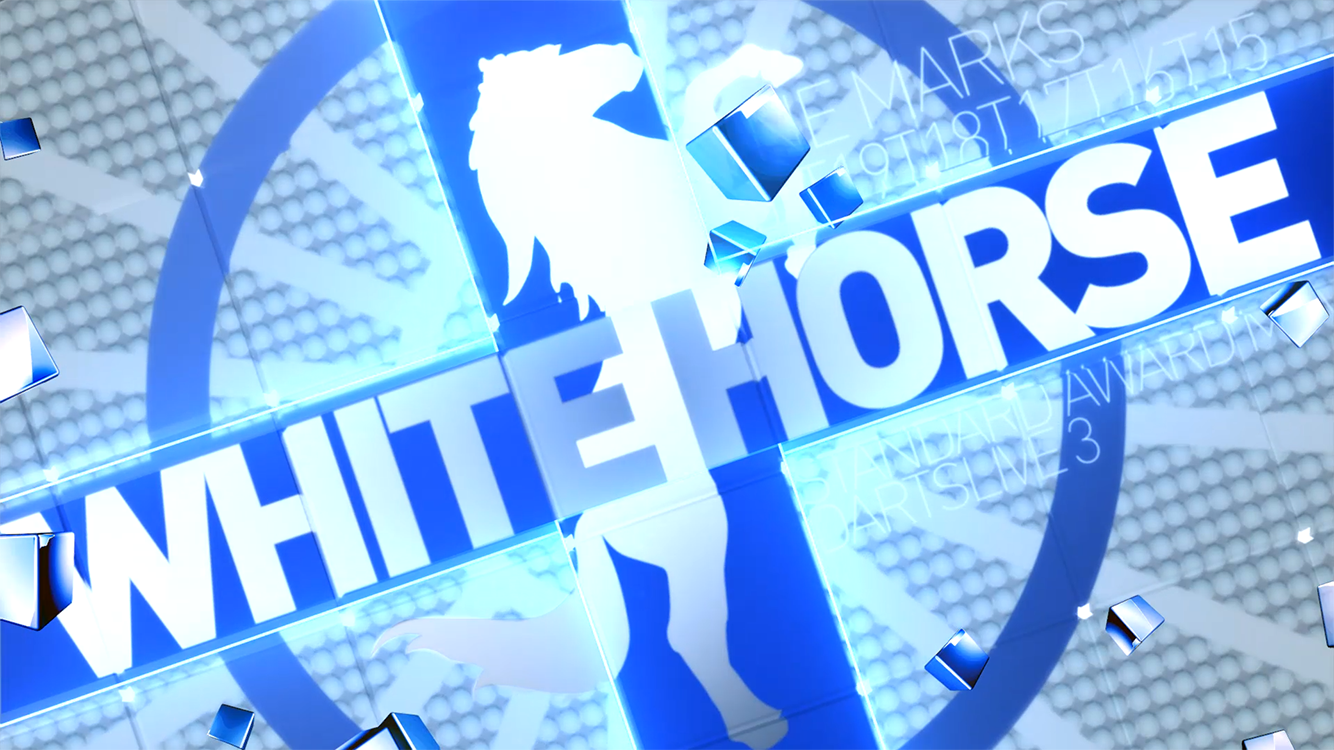I never said I was going to do this in order, okay?
-Segazoom
It’s time to learn about your dear writer again. I love Darts. Love watching it, love playing it. I’m maybe at pub level, but don’t have a good place to practice. I also love all kinds of sports games. We all know where I’m going here. A categorical disclaimer; this is specifically for Steel-Tip or Soft-Tip darts videogames. Archery and other types of Target Shooting will come along in later volumes. While I will attempt to be exhaustive, here, some may fall by the wayside for the sake of brevity and sanity. First up: [Non-Micro]Computer Darts.
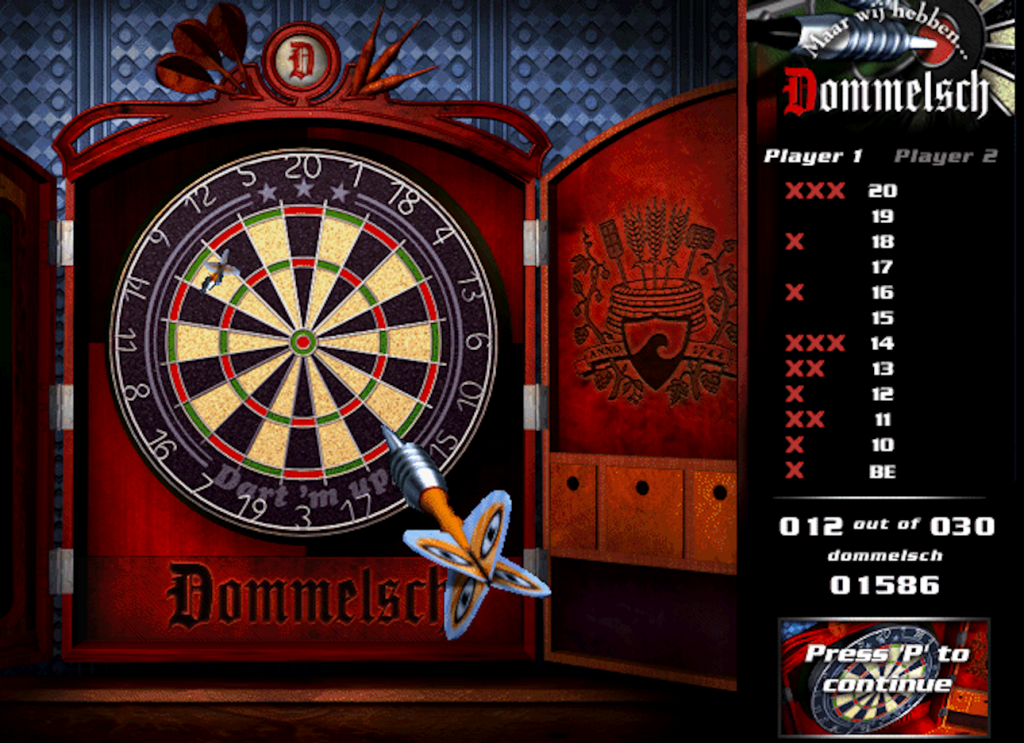
Let’s begin with, as seems most appropriate, a Beer Advergame. Dart ‘M Up, subtly sponsored by Dommelsch, a Dutch brewery, is rather basic, as you would expect. The game appears to have you play a modified version of the Darts format Cricket – This involves claiming board areas by scoring 3 hits on a segment (a Treble 20 will give you control of the 20s straight away, as would a Double and a Single or 3 Singles). Your opponent is also going for the same targets; when you have both claimed a segment, that segment closes. You gain points by continuing to land in a claimed segment that has not yet closed, so there is an element of tactical play. This format is much more prevalent in the Soft-Tip world and is a large part of competitive Soft-Tip Darts formats. The mechanics couldn’t be simpler: Angle the dart with your mouse left to right, and throw the dart by holding the mouse button until a cursor scrolls up to where you want to hit or make a swinging motion with the mouse vertically to release the dart. Both methods are quite clumsy and imprecise. This is a throwaway title; it won’t be the last we rub elbows with today.

It’s time for every old-timey PC player’s favourite thing: Shareware. This was a version of Office Darts called Office Darts 301, which is locked to – you guessed it – the 301 Darts format, but the double out rule is missing; in the full version you can apply the more standard double out rule, but in this demo version you can go out on a single number. It’s probably just as well, because getting the weight of a shot is a total nightmare, at least in the not-really-at-low-resolution, not-really-on-a-Windows-3.1-screen environment I was able to experience it in. I could fiddle with the DPI to afford myself more leniency, but it would need a lot more meat on the bones to drive me to do so. The full version has more Darts game types, like the aforementioned Cricket and Count-Up, among others. The mechanic of picking up your darts from the Zero-G box that represents your other hand is cute, and the sardonic humour in telling you have thrown your dart ‘out of the window’ or ‘straight down’ when you release too fast or too late put a wry smile on my face. Otherwise, not much to see here.
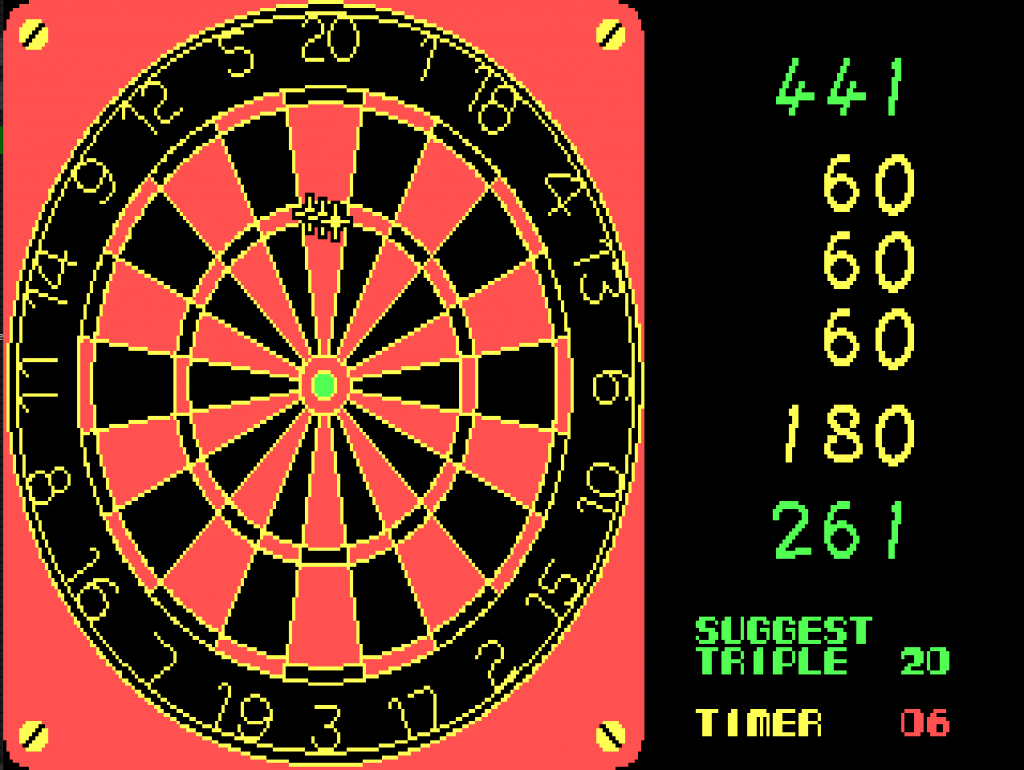
Ok, let’s transition into Microcomputers. Sort Of. See, any Brit of a certain age may well recall a dart game called 180 on the ZX Spectrum and Commodore 64, among other platforms. But it also received a DOS port as World Darts which is pictured above. Anyone aware of the other version will find it very familiar, on account of it being almost exactly the same. The premise is simple; you’re in the pub league, climbing the ranks. You play 501, finishing on a double. To keep you visually engaged, your opponents take their shots from a side-on perspective. The core mechanic is the same in all versions; a hand zooms across the screen, dart in hand, imitating a backswing. Taking into account inertia on the hand’s movements, you press to release the dart when you are approximately over the position you’re looking to fire to, be it the red bit of the 20, – which is ironically black in this version due to the limited colour palette – the bullseye, or the big 1. 180 also introduces a shot clock which allows space for variance as you can’t aim forever and will occasionally have to bail to a safer target. It feels satisfyingly fluid and just-about-within-control. 180 is the benchmark from which to work on all microcomputer formats.
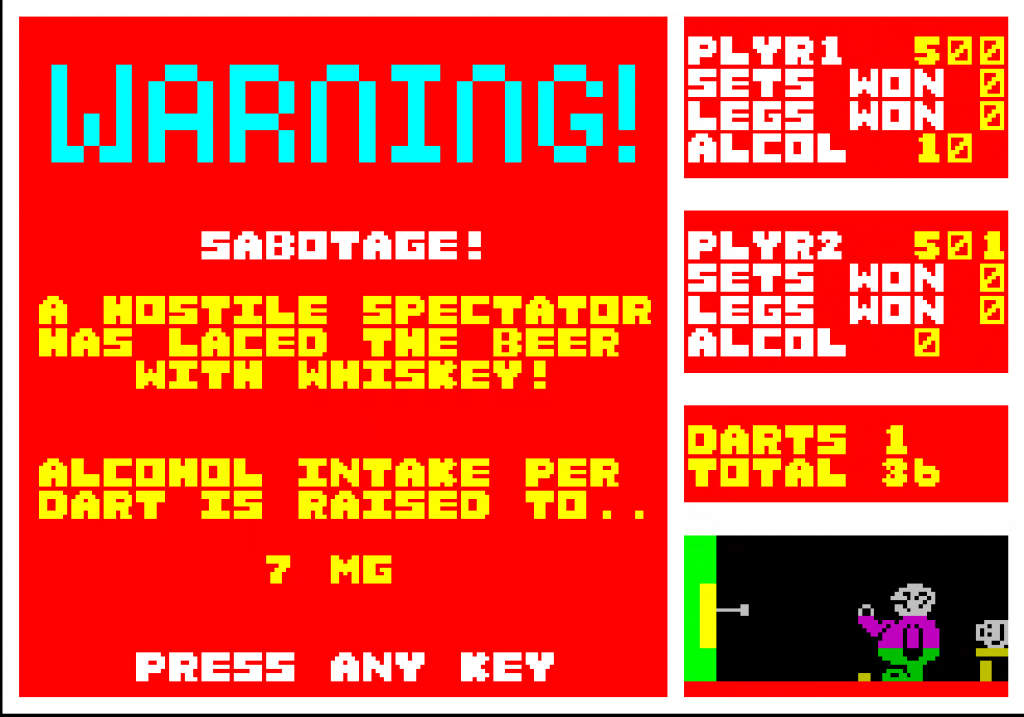
But enough of that, let’s go dangerously English now. Enter: Dartz. If you look to your left, you will see the unique mechanic involved: you’re in the pub league, so of course, you’re getting hammered, but you can be sabotaged into drinking more potent drinks than you intended or be innocently given drinks as a poisoned chalice of naïve support. As a result, your blood alcohol ticks ever upward, making your aim gradually less accurate and timing much harder. Other than this, the throw is in two stages: a cursor spins across the board for you to stop on a segment followed by a close-up of the segment you can adjust the height of your arrows. Due to the biting social commentary of Darts players being beer-belly blowhards in the 80s, there’s some personality here, but the moment-to-moment gameplay is not as slick as 180.
You know Codemasters, the Colin McRae, Dirt, Grid and Micro Machines folks? You may not know unless you’re at least as old as I am and from the UK that in the 80s they were mostly known for putting the word simulator on any kind of task and calling that a game (a trend that is echoing through gaming again as we speak). As a result of this, we land on things like Wacky Darts. A Darts simulator of sorts, but mostly just a collection of visual gags dragging you through the challenging-to-read throwing mechanic. Here, the position of the dart in The Hand (TM) [not by me, don’t sue me MGM] also serves as a strength/height indicator. It becomes more intuitive as you understand its rhythm, but you will be spraying darts high and low until you become one with the ever-rocking floating appendage.
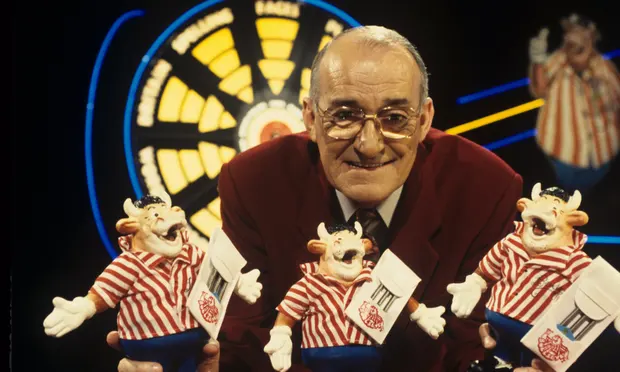
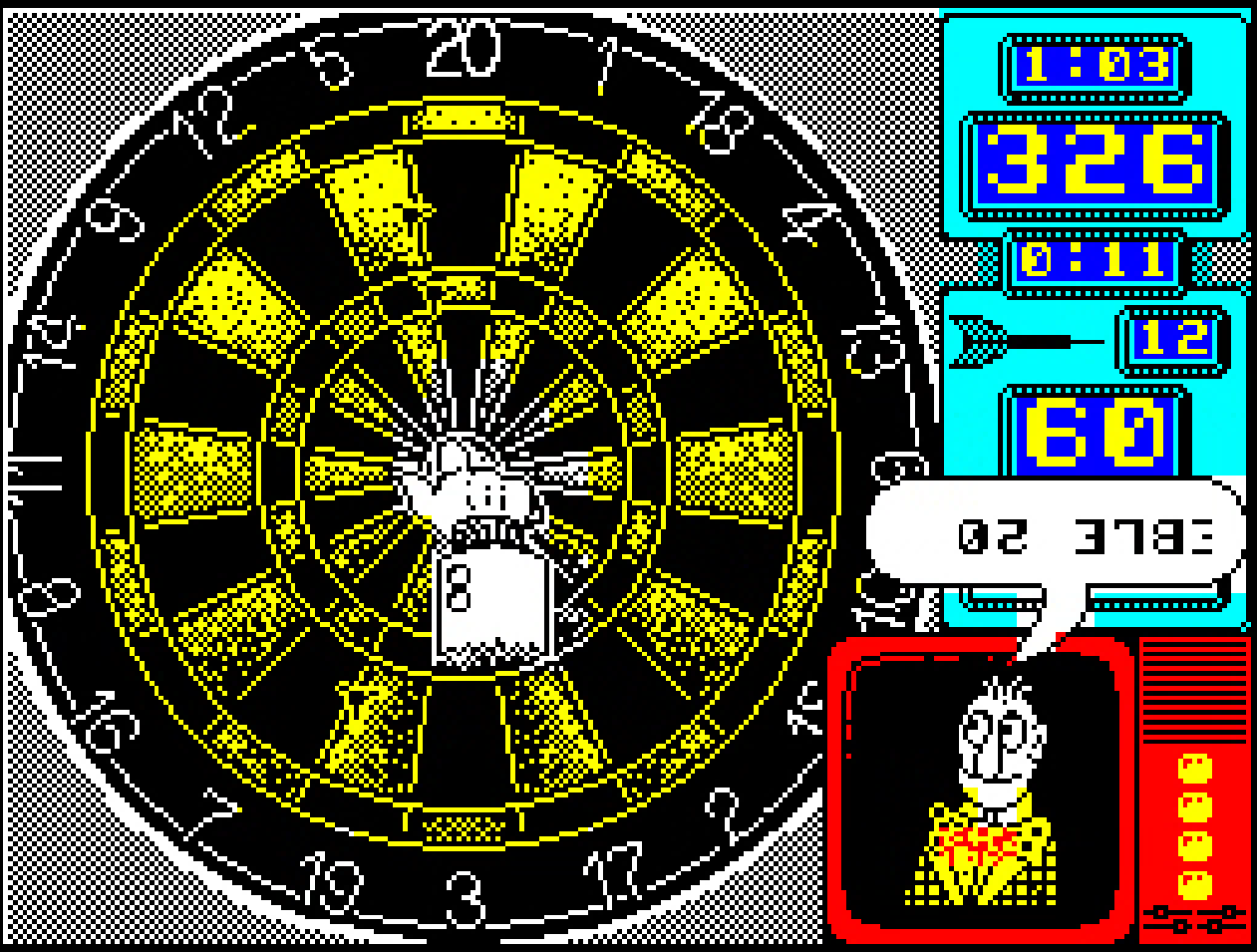
What’s that? The Jim Bowen klaxon is blaring? Oh, OK then, it’s time for Bully’s Special Prize – some Bullseye video games! For those blissfully unaware, Bullseye was an actual game show based around darts, known for excruciating introductory small talk, some extremely questionable techniques by many contestants and prizes that just look like weird tax write-offs, most notably the speedboat. Now if you know anything about the UK, you’ll know that darts is a working-class game, and strangely enough, the working class have very little use for a fucking speedboat. Anyway, on with the games!
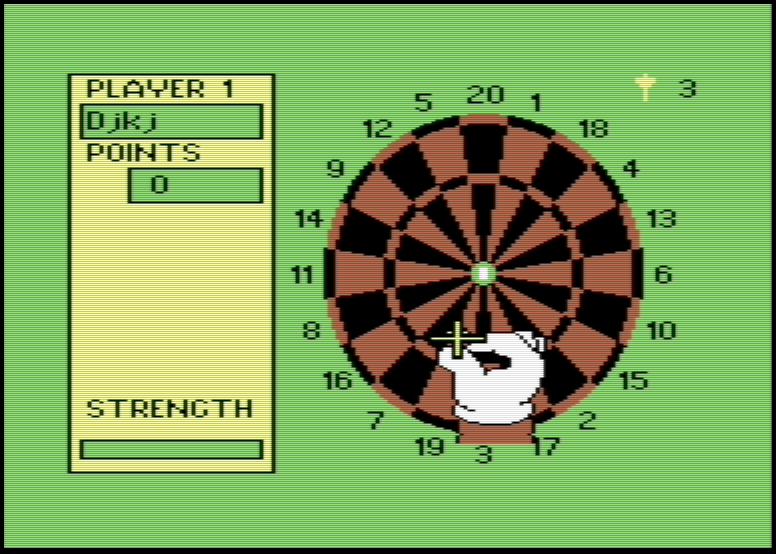
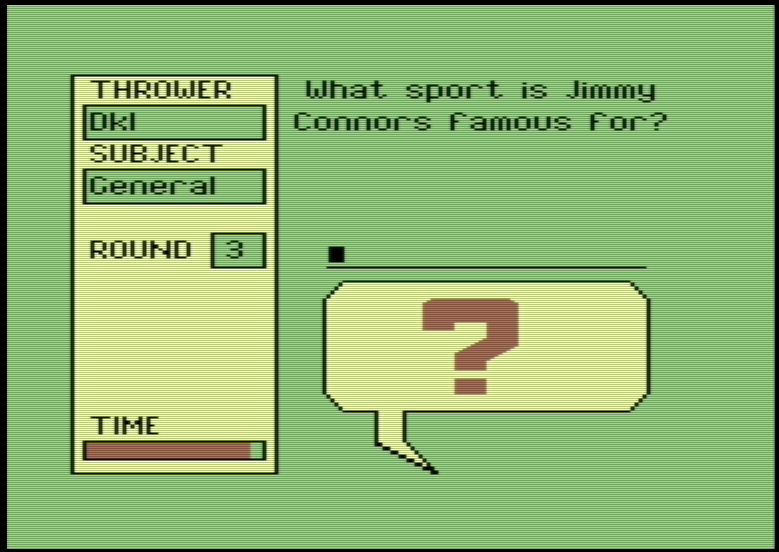
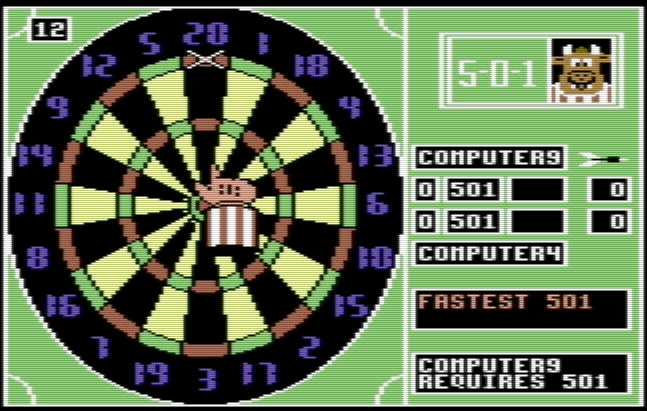
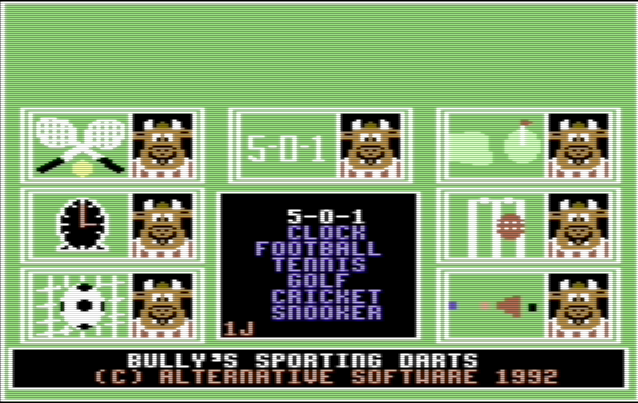
Bullseye (pictured top left and right) is a beat-for-beat recreation of the TV show, beginning with the categories round, where you choose a category by aiming at the area of the board you want, then pray you know the full answer to the question as this is NOT multiple choice. After this round, every player takes 3 darts to a standard dart board, and the player who scores the most gets a question worth that amount of points. After this, the winner of those 2 rounds gets to the prize board. Unfortunately, you can’t win your own speedboat. It’s just for leaderboard points. Bully’s disembodied hand doesn’t move on its own: instead the randomness is baked in by the strength meter used to throw. It’s faithful, but a little dry.
Bully’s Sporting Darts (pictured bottom left and bottom right), on the other hand, is just a mascot attachment to a fairly standard darts game. A few graphically-enchanced sport variations of darts games are here, including a standard 501 and Around The Clock. Fun game with 2 players, but not much to offer for the single player (other than some perfect opponents to batter your head against).
Oh, one last word of warning: There’s a Bullseye game on modern platforms. Avoid it like the… do humans avoid anything these days? Anyway, it’s abysmal. I refuse to even give it an image. Stay well away.
To see us home for the microcomputer contingent, it’s time to meet some player-endorsed efforts: John Lowe’s Ultimate Darts and Jocky Wilson’s Darts Compendium.
John “Old Stoneface” Lowe was the first to ever hit a 9 dart-finish -perfection in darts – on a TV stage. His space in the history books is guaranteed, and he offered no emotion at the oche. As a result, clearly chosen to endorse a game as a commanding force in the sport, not as a character. Jocky “Gumsy” Wilson, on the other hand, was a firecracker on the stage, famously getting intensely annoyed at Terry Down, the slowest player you’ve ever seen.
John Lowe’s Ultimate Darts is one of those instances where ultimate definitely stands for last, not definitive. The presentation is dry, the gameplay is fiddly and the personality is AWOL. What Gremlin Graphics have done well here (yes, THAT Gremlin Graphics) is include an option that allows you to use the game as a practice partner while you play real darts on your end. Pretty forward thinking for 1990, and potentially useful for an arrowsmith-in-training.

Jocky Wilson’s Darts Compendium fares a little better, thanks to some opponent animations. It’s certainly a more interesting interpretation than Mr Lowe’s, offering a few more game types and more legible throwing mechanics, remaining firmly in the ‘decapitated hand bounces around a screen, shaking’ genre of aiming systems. At this point, you likely realised I spent time doing a brief background of each dart player because these two games aren’t giving me much to work with. Oh well, we march on. Let’s briefly walk towards the arcade. Crack open your trackballs!
But crack them open next time, because this brief walk is actually going to be a break for lunch. I’ll see you with Arcade, Console and Handheld Darts games next time.

